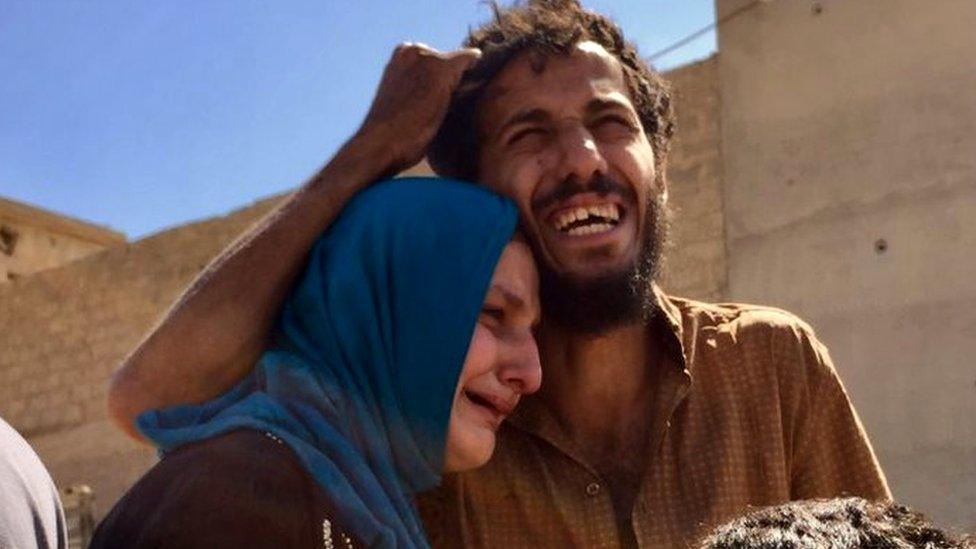Battle for Mosul: Destruction of al-Nuri mosque 'shows IS defeated'
- Published
Blast in Iraq destroys Great Mosque of al-Nuri
Iraqi Prime Minister Haider al-Abadi says the destruction of an ancient mosque in the city of Mosul is "an official declaration of defeat" by so-called Islamic State (IS).
Iraqi forces say IS blew up the Great Mosque of al-Nuri and its famous leaning minaret as jihadists battled to stop advancing pro-government troops.
IS said American aircraft had destroyed the complex, a claim denied by the US.
Aerial photographs show the complex largely destroyed.
The mosque, which was more than 800 years old, was where in July 2014 IS leader Abu Bakr al-Baghdadi demanded allegiance in his first and only public appearance following the declaration days earlier of a "caliphate".
The mosque's destruction has brought widespread condemnation.
Lazare Eloundou Assomo, deputy director of the UN's cultural organisation Unesco, said the "iconic" mosque could have helped foster "reconciliation and peace" in Iraq in future.
What happened to the Great Mosque?
The Iraqi commander in charge of the offensive to retake Mosul said troops were within 50m (160ft) of the mosque when IS "committed another historical crime".
Footage released by the Iraqi forces shows the ancient landmark being demolished.
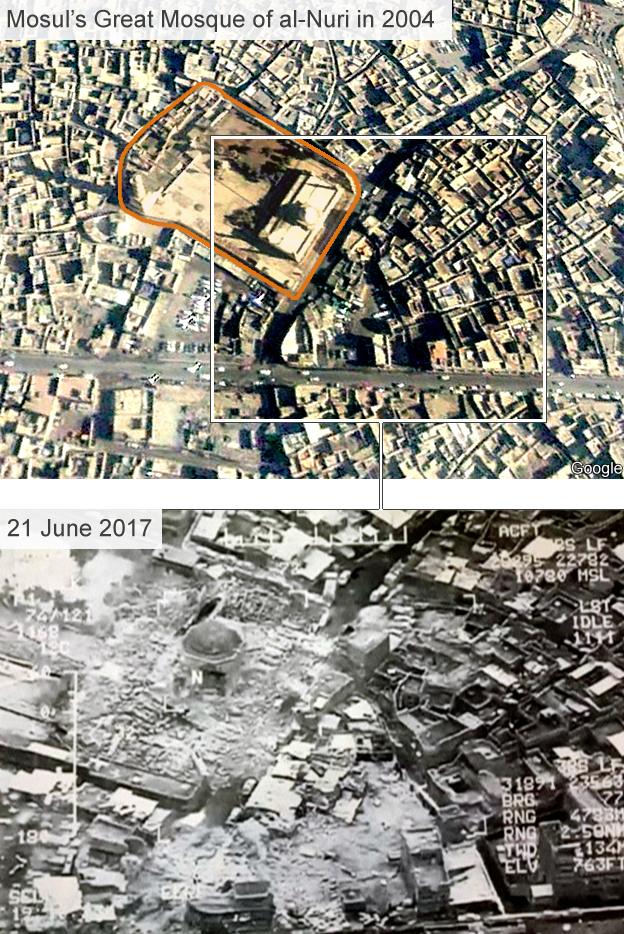
The Iraqi military provided this image showing the destruction at the mosque compound
Previous reports said IS had rigged the mosque with explosives to stop the advance of Iraqi troops, but that local residents had until now prevented the militants from blowing it up.
IS says the mosque was destroyed by a US air strike but has not provided any evidence to support this.
Iraqi forces are one street away from entering the mosque site, according to state TV, and more details may emerge if they do so.
One local resident, Ahmed Saied, told Reuters news agency that "when I looked out of the window and saw the minaret was no longer there, I felt a part of me had died."
But 38-year-old Yasser Ali told the Agence France-Presse that while it was "Mosul's symbol and icon, there are people who have been killed. They are much more precious than the minaret".
Why was the mosque important?
The al-Nuri mosque dated back to 1172 and was Mosul's most famous Sunni mosque. It was named after the Muslim leader, Nur al-Din Mahmoud Zanki, famous for waging jihad against Christian crusaders.
The leaning minaret, covered with elaborate brickwork, was nicknamed "the hunchback".
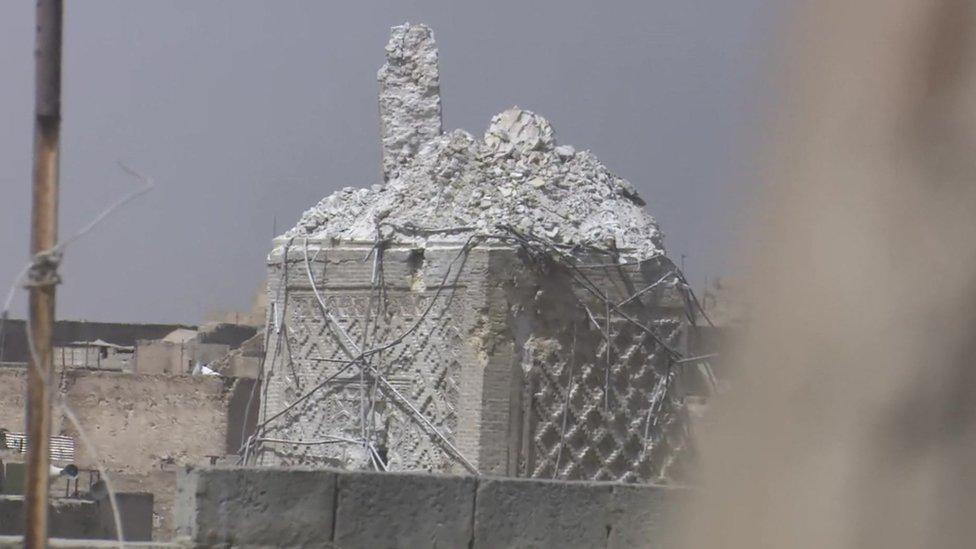
The BBC gained access to the site of the destroyed mosque on Thursday
A month after IS forces overran Mosul in June 2014, Baghdadi gave a Friday sermon from the pulpit inside the mosque and spoke about the newly-proclaimed caliphate - a state governed in accordance with Islamic law, or Sharia, by God's deputy on Earth, or caliph.
The militant group flew its black flag from the famous minaret and the building became the centre of IS activities.
Why would IS blow it up?
IS fighters have shown scant regard for history or culture in the three years since their lightning advance across northern Iraq, says Paul Adams, BBC News world affairs correspondent.
Destruction of the mosque, most observers assumed, would mark the group's final act of angry defiance before finally losing their grip on Mosul.
Destroying the landmark would perhaps be better for IS than seeing it in the hands of its enemies - a scenario that would be a bigger symbolic blow for the group, adds BBC Monitoring journalist Mina al-Lami.
Moreover, IS has openly said it will pursue scorched earth tactics in Mosul, she says. It has already targeted several mosques and tombs, including The Shrine of Yunus.
The BBC filmed these pictures of the mosque from across the front line just hours before it was destroyed
Meanwhile, the group's official line that the mosque was destroyed in US air strikes has inspired defiance and threats of retaliation among its supporters online, according to BBC Monitoring.
Sympathisers said Iraqi forces believed that destroying the mosque would break IS militants' spirit but that instead it would make them more determined to fight on.
Is the battle for Mosul over?
Thousands of Iraqi security forces, Kurdish Peshmerga fighters, Sunni Arab tribesmen and Shia militiamen, supported by US-led coalition warplanes and military advisers, have been involved in the battle to retake the key city since 17 October last year.
The government announced the full "liberation" of eastern Mosul in January, but the west of the city has presented a more difficult challenge, with its narrow, winding streets.
The UN has warned that IS may be holding more than 100,000 people in the city as human shields.

On Sunday, commanders announced the start of the "final chapter" of the offensive, with Iraq's counter-terrorism service, army and federal police attacking the Old City from all directions.
The army said it believed there were no more than 300 militants left in the city, compared with almost 6,000 in October.
On Tuesday, an Iraqi military statement on state TV said IS had lost control and civilians previously trapped in the Old City were being released.
The US military has hailed gains by Iraqi forces but says the full liberation of the city from IS control is not yet complete.
Meanwhile, Russia's foreign ministry said on Thursday that it was "possible to say with a high degree of certainty" that one of its air strikes had killed Abu Bakr al-Baghdadi in Syria.
Russia announced earlier this month that it was investigating whether a 28 May air strike on Raqqa had killed the IS leader.
- Published21 June 2017
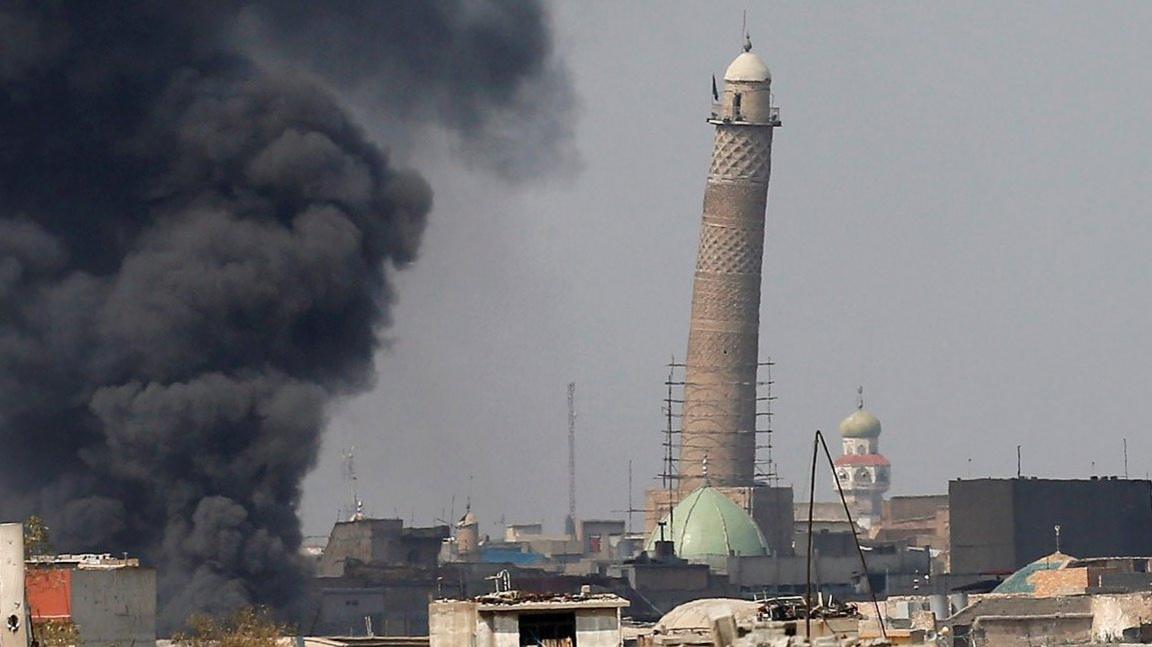
- Published22 June 2017
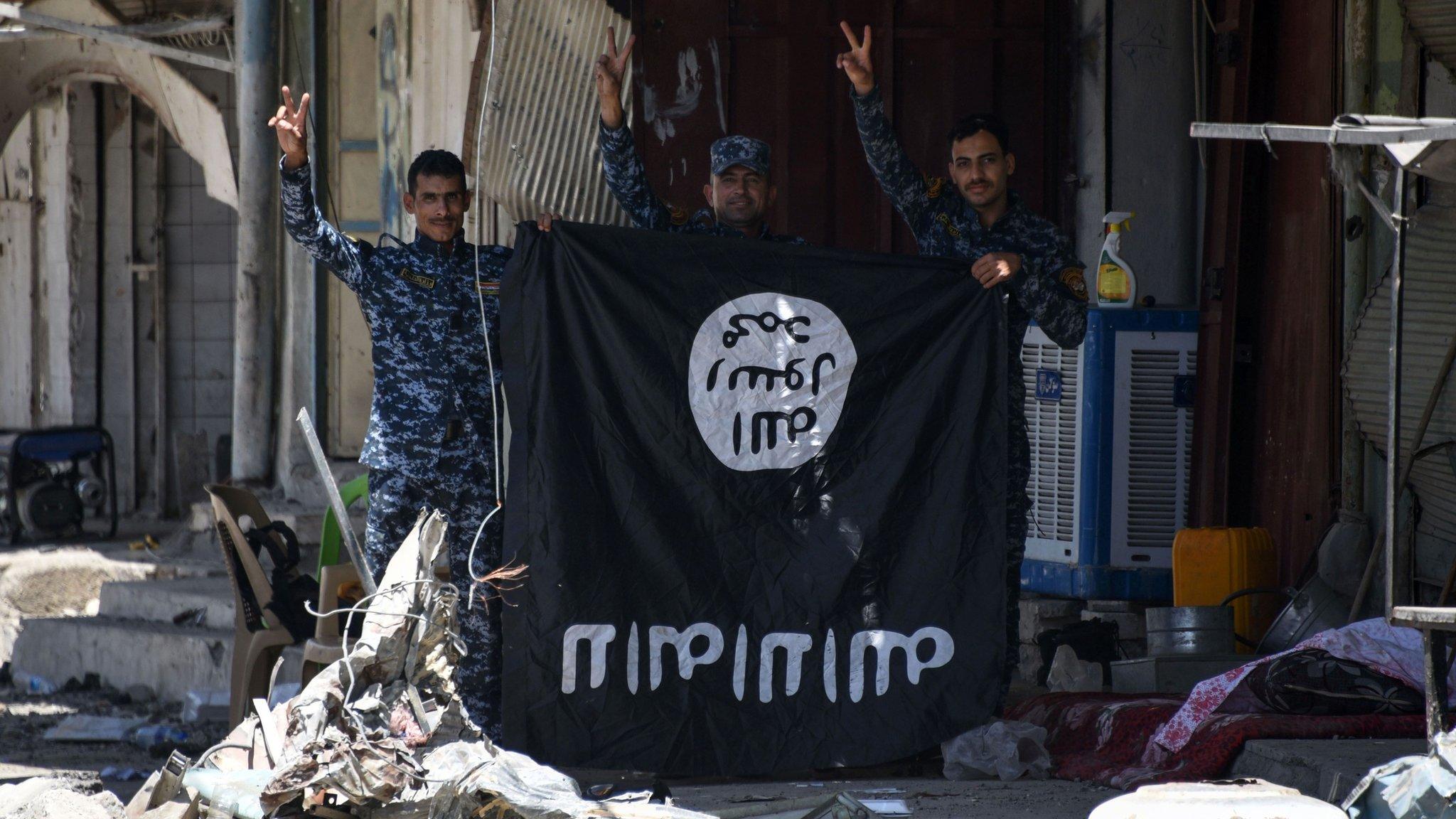
- Published10 July 2017

- Published16 June 2017
